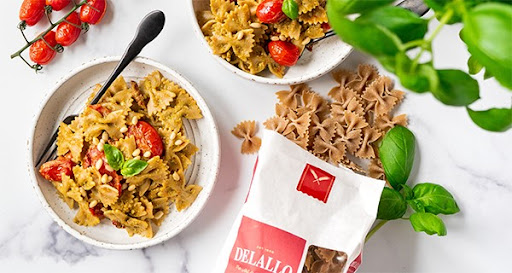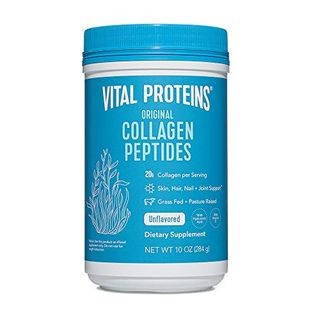Let’s Celebrate the Earth all Month Long
April 22, 2022 marks another anniversary of Earth Day and this year’s theme is “Invest in our planet.” This edition of the nutrition newsletter will feature useful articles and topics to help you invest in the planet and by doing so, you also invest in YOU and your health! The Fleet Feet running community is founded on the principles of supporting people – of all ages, shapes and sizes, colors, and ability levels – to reach their running goals, and a byproduct of being in a community of runners is better health. So as we begin the transition towards more spring-like weather, pay attention to the natural changes in the environment on your running route – listen for the sounds of birds and “peepers,” look for the tracks of animals to indicate movement, and see the greening or emerging of plants – and consider one small act you can do each day in April to invest in the planet. My personal plan is to carry a small bag and pick up litter during my runs. What’s your plan of action?

Nutrition-Related Sustainability Tips for Earth Month (Source: Patricia Bannan, RD)
Most discussions during Earth Month revolve around climate change, pollution, deforestation, and rising CO2 emissions. These are undoubtedly important global concerns, but oftentimes people feel helpless at an individual level. That should not be the case, as we know that small acts can (and do!) add up. The concept of sustainability, in simple terms, refers to protecting natural resources so that future generations have enough water, food, and energy to have a good life. At the individual level, we can do small acts each day (especially as it relates to our nutrition) that embody sustainability. This might be through our food shopping practices, purchasing habits, and food choices. Read on for easy nutrition-related sustainability tips:
- Embrace ugly produce ** Check out Misfits Market online
- Meal plan
- Buy milk or juice in glass bottles that can be reused
- Stop drinking bottled water
- Bring your own coffee cup
- Get creative with leftovers
- Eat more plants ** The longest living populations on the planet eat less meat, and some research suggests that minimizing animal products can increase life span and improve quality of life.
- Organize and properly store groceries
- Bring your own bags when you shop
- Use stainless steel or silicone straws instead of plastic disposable straws
- Reduce, reuse, and recycle
- Eat local, buy local
- Fertilize with your own compost
- Buy organic food when possible
- Plant a garden
Why Buy Organic (Source: MBG and Harvard Health)
Eating organic foods is a better choice for the environment. While the jury is still out on whether organic foods hold higher nutritional value, what is clear is that organic food contains higher level of antioxidants and lower amounts of pesticides. Earth Month is a good time to contemplate buying organic produce because organic farming methods reduce pollution, conserve water, reduce soil erosion, increase soil fertility, and use less energy overall. If cost is a concern, consider purchasing produce that traditionally does not have high amounts of pesticides. The Environmental Working Group (EWG) publishes annually the “Dirty Dozen” and “Clean 15” which list foods with the highest and lowest amount of pesticides. These lists can provide guidance on where to best spend your money. Here are some other benefits and reasons to buy organic:
- Organic food can reduce our exposure to chemicals.
- Organic food can lead to more nutritious food or vitamin enriched fruits and vegetables.
- Organic dairy and meat can be healthier than non-organic varieties.
- Organic food may have higher levels of Omega-3s.
- Organic food is GMO-free.
- Organic food is often fresher.
Because the USDA has very stringent requirements for organic foods, you can be assured that if a product has the organic label, it has met the very highest of production and farming standards. Expect to see higher prices on organic products by as much as 10-50%, but that cost might be mitigated if you buy “in season” and at local farm markets.
Sustainable Recipe for Earth Month: Farfalle Pesto Pasta (Source: Sprouts Market)

You can take care of the environment by cooking with and eating organic food. Organic foods are grown the way that nature intended, without pesticides or harmful chemicals. Organic farming methods help protect the quality of the soil and water and also lower greenhouse gas emissions. In this recipe, choose organic ingredients. Bon appetite!
Ready in 20 minutes
Prep time: 5 minutes
Cook time: 15 minutes
Serves: 6
- Ingredients:
- 1/2 package of organic whole wheat farfalle pasta (or your favorite GF pasta)
- A pinch of salt
- 1 TBSP organic butter
- 2 C organic grape tomatoes
- ½ C organic pesto
- 1/3 C organic sundried tomatoes
- ¼ C organic pine nuts
- Fresh basil for topping
Directions:
- Cook half the package of pasta according to the directions.
- While the pasta is cooking, add 1 TBSP of butter to skillet at medium heat.
- When skillet is hot, add 2 cups of grape tomatoes to the butter and sauté for 10 minutes.
- Chop 1/3 cup of sundried tomatoes into small chunks.
- When pasta is al dente, drain and combine with ½ cup of pesto and 1/3 cup of sundried tomatoes.
- Serve and garnish with pine nuts and fresh basil.
Eating on the Run: Easy Snacks that Start with a Banana (Source: Eating Well)
Bananas are one of nature’s perfect fruits – it’s tasty, convenient, comes in its own “packaging,” and a great source of vitamins, minerals, and fiber. It is America’s favorite fruit. Most runners enjoy bananas pre- or post-run because they are easy on the belly, so with bananas being so popular, let’s also consider other ways to easily incorporate bananas into the day, so you can freely “Go-go-go bananas!”
- Banana carrot smoothie – soak 1 Medjool date in 2 Tbsp hot water for 5 minutes. Combine in a blender with 1 banana, ½ C each low-fat plain kefir, shredded carrots, and ice cubes, and a pinch of ground ginger. Blend until smooth.
- Banana tahini toast – spread 1 Tbsp tahini (or other nut butter) on 1 slice whole-wheat toast. Top with 1 sliced banana, drizzle with 1 tsp honey, and sprinkle with a pinch of sea salt.
- Banana chia pudding – mash 1 banana in a small bowl. Whisk in ½ cup unsweetened plant-based milk, 2 Tbsp chia seeds, and 2 tsp pure maple syrup. Refrigerate for at least 1 hour and up to 3 days. Stir and top with 1 crumbled vanilla wafer cookie.
- Banana nice cream – puree 1 cup frozen sliced banana in a food processor until smooth. Transfer to a small bowl and top with ¼ cup crushed pretzels, 1 Tbsp unsalted roasted peanuts, and 1 tsp mini chocolate chips.
Sports Nutrition Tip for the Month: Supplementing with Collagen
Sports nutrition fads come and go, and collagen is trending right now. Most people know collagen as the substance in the skin that improves texture and appearance. As we age, collagen production decreases and therefore, we see more wrinkles. But when it comes to running and recovery, does collagen have a place in our diets? Let’s learn a little bit more about collagen before we decide to add this to our supplement lineup.
Collagen is naturally found in the skin, bones, and other connective tissues (e.g., tendons, ligaments, cartilage), which means that it is especially abundant in our joints. As runners, our joints take a pounding day-in and day-out and because we need our joints to remain flexible, it makes sense that collagen might be beneficial in the recovery process. There is a decent amount of research to support this and specifically, collagen was found to improve joint pain, recovery from joint injuries, reduce muscle soreness, and improve overall recovery time. At this time, it is not known whether it actually prevents injuries, but supplementation does seem to increase muscle protein synthesis and can improve bone health in women.
Runners may benefit from taking collagen (or at least making sure that you’re getting enough collagen through your diet). Most collagen products on the market recommend a daily serving of 10g of hydrolyzed collagen which (in powder form) could be easily added to a post-workout recovery shake or taken in tablet form. At Fleet Feet, look on the shelf for Vital Proteins Collagen Peptides. It is sourced from grass-fed cattle, and contains vitamin C and hyaluronic acid. Mix with your morning coffee, add a scoop to a recovery drink or smoothie and perform your own personal experiment. You be the judge!

About Katina:
Katina Sayers, Ed.D., is the owner of Katina’s Nutritional Coaching Corner. She has an extensive background in health and education that began with degrees in exercise physiology, health and physical education, community health, and culminating with a doctoral degree in curriculum and instruction. She completed her Integrative Nutrition and Health Coaching Certification, from the world's top nutrition experts, at the renowned Institute for Integrative Nutrition (IIN). She is a 5-time national medalist and competitive off-road cyclist and duathlete who can be seen on almost a daily basis riding and running the hills and trails in and around Tully Valley. She relies on a well-rounded diet to fuel her athletic adventures. You can contact Katina for nutritional coaching at: ksayerswalker@gmail.com.
Latest News
Upcoming Events
Table Rock Trail Challenge
All Day | Clark Reservation State Park, 6105 E Seneca Turnpike, Jamesville, NY 13078
Table Rock Trail Challenge (6/14) is a Last One Standing trail race with a twist: the …
Learn More ›Run For Jeff
All Day | Woods Road Park, 900 Woods Rd, Solvay, NY 13209
Run/Walk/RuckLots of great food and rafflesRunforjeff.com
Learn More ›
Connect With Us
See the latest from Fleet Feet Syracuse